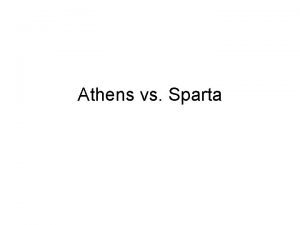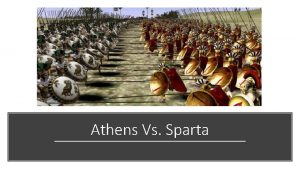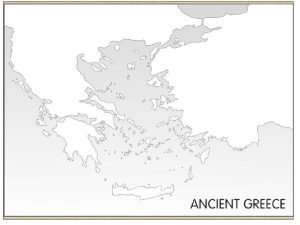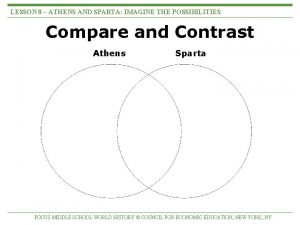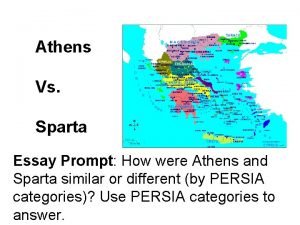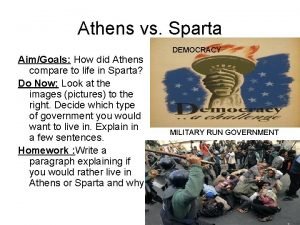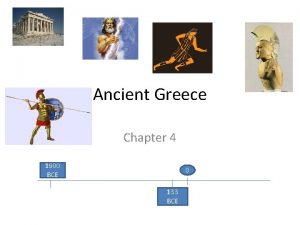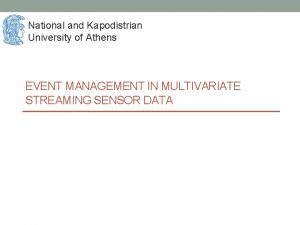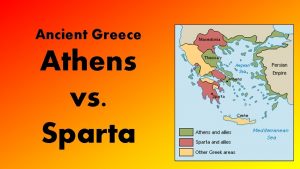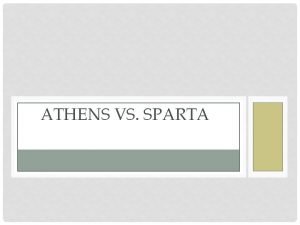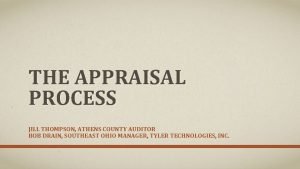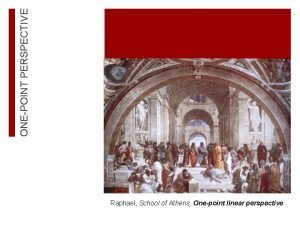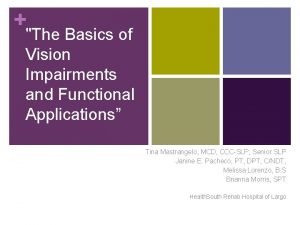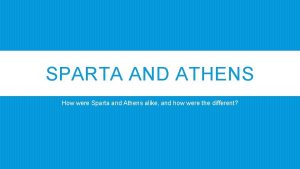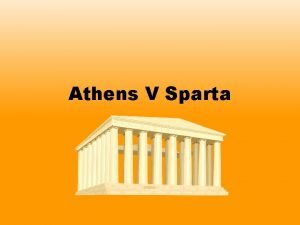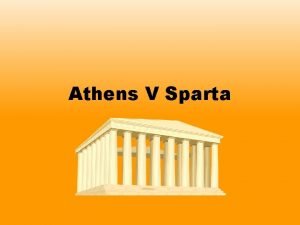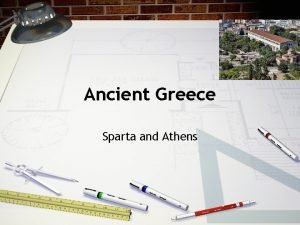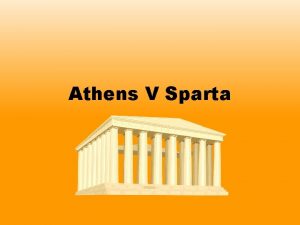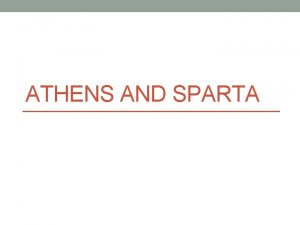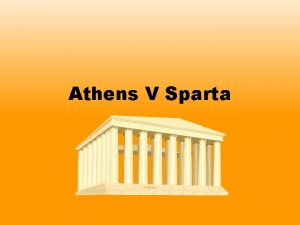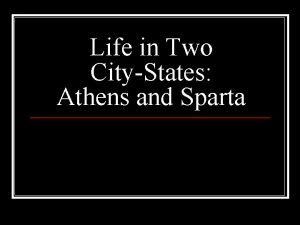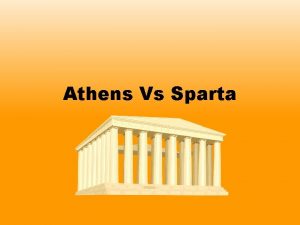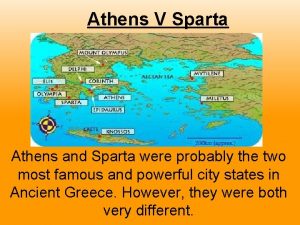ATHENS WORKSHOP EC 8 3 2005 and n
































- Slides: 32

ATHENS WORKSHOP / EC 8– 3 : 2005 and n. GCSI : 2012 APRIL 12, 2013 MAIN DIFFERENCES BETWEEN THE TWO CODES M. CHRONOPOULOS, LRC/NTUA/GR


• Assessment and Retrofitting of existing structures for non-seismic actions is not yet covered by the relevant material-dependent Euro. Codes (or existing National Codes). • The “framework” of the EC 8 -3 (and the n. GCSI) was specifically developed because : For many older structures, seismic resistance was not considered during the original design/construction, whereas non-seismic actions were catered for, at least by means of “traditional” construction rules. Seismic hazard evaluations in accordance with present knowledge may indicate the need for retrofitting programmes and campaings (“active” or “passive”). Damage caused by earthquakes may create the need for major and costly structural interventions (repair/strengthening), not to mention other consequences.

DESIGN OF BUILDINGS FOR EARTHQUAKE RESISTANCE ASSESSMENT AND RETROFITTING or STRUCTURAL (ASSESSMENT AND) INTERVENTIONS • The EC 8 -3 : 2005 Main Body/Six (short) Chapters / approx. 30 pages, and Informative Annex A for RC Structures / approx. 20 pages. • The n. GCSI : 2012, for RC Structures (only), Final Harmonized Text Main Body and (Normative) Commentary / Eleven Chapters / approx. 350 pages. A new Chapter (no. 12) on Structural Additions or/and Changes of Use. Retrofitting = Str. Interventions, Repair or/and Strengthening

THE RATIONALISM OF THE n. GCSI : 2012, ITS CONTENTS 1. 2. 3. 4. SCOPE-FIELD OF APPLICATION-OBLIGATIONS AND RESPONSIBILITIES BASIC PRINCIPLES, CRITERIA AND PROCEDURES INVESTIGATION AND DOCUMENTATION OF THE EXISTING BUILDING BASIC DATA, ASSESSMENT AND REDESIGN + Four (4) Appendices (normative) 5. ANALYSIS, BEFORE AND AFTER THE INTERVENTIONS 6. BASIC BEHAVIOUR MODELS 7. THE BEHAVIOUR OF EXISTING OR NEW RC ELEMENTS + INFILLS + Four (4) Appendices (normative) 8. DESIGN OF INTERVENTIONS 9. SAFETY VERIFICATIONS 10. REQUIRED CONTENTS OF THE DESIGN FILE, ASSESSMENT AND REDESIGN 11. CONSTRUCTION-QUALITY ASSURANCE-MAINTENANCE

NOTE 1 The definition of the LS of NC given in EC 8 -3 is different than that given in EC 8 -1. Thus, the LS of NC is closer to the actual collapse and corresponds to the fullest exploitation of the deformation capacity of the structural elements. NCEC 8 -1 SDEC 8 -3

NOTE 2 • Distinction between “ductile” or “brittle” structural elements and mechanisms, i. e. deformation or strength controlled ones. See additional details and rules given by the n. GCSI (μ 2 , μφ 3). • Distinction between “primary” (P) or “secondary” (S) seismic structural elements, using more or less conservative estimates of their capacities. EC’s : n. GCSI S/P+S 15% : S/P+S 25%.

EC 8 -3 / STATE OF DAMAGE IN THE STRUCTURE Three (3) LIMIT STATES (LS’s), namely Near Collapse (NC), Significant Damage (SD) and Damage Limitation (DL). The National Authorities decide whether all three LS’s shall be checked, or two of them, or just one of them. NC : Pe = 2% in Lt = 50 years, Tr = 2. 475 years SD : Pe = 10% in Lt = 50 years, Tr = 475 years DL : Pe = 20% in Lt = 50 years, Tr = 225 years ____________________________ n. GCSI : DIFFERENCES …

n. GCSI / TARGET BEHAVIOUR PERFORMANCE LEVEL, SEISMIC ACTION EQ PL A/LD B/SD C/NC A 1 B 1 C 1 A 2 B 2 C 2 10% / 50 years 100% 50% / 50 years 60% IMPORTANCE : I / All, II / All but C 2, III and IV / A 1, A 2, B 1

Since existing structures (old ones, damaged or not) : (i) reflect the state of knowledge at the time of their construction, (ii) possibly contain hidden gross errors and problems, and (iii) may have been submitted to previous actions (accidental or not) with unknown effects, structural evaluation/assessment, structural intervention and redesign (if needed) are typically subjected to a different and a more complex degree of uncertainly than the design of new structures. Therefore, different sets of partial safety and structural safety factors are required, as well as different analysis, dimensioning and verification procedures, depending (among others) on the completeness and reliability of the information available. INVESTIGATION / DOCUMENTATION

EC 8 -3 / Capacities of ductile or brittle structural elements • In general, mean value properties of the existing materials are used, as directly obtained from in-situ tests and from the additional sources of information, appropriately divided by the confidence factor (CF), accounting for the knowledge level (KL) attained. • Especially for brittle primary seismic elements, their strengths shall be based on material strengths divided by appropriate partial safety factors (γm), taking into account that the γm values of the EC 8 -1 are meant for the design of new buildings. n. GCSI : DRL and a full set of mod. γf and γm, as well as of γSd and γRd. Mat. properties : fm or fm – S.

EC 8 -3 / KNOWLEDGE LEVEL (KL), CONFIDENCE FACTOR (CF) Regarding the RC structural system, its components and its elements, for choosing the allowable type of analysis and the appropriate confidence factor values. . . Factors determining the appropriate knowledge level : 1) GEOMETRY From original outline construction drawings with sample visual survey or from full survey 2) DETAILS See Table 3) MATERIALS See Table ______________________________ KL 1 : Limited Knowledge CF = 1, 35 KL 2 : Normal Knowledge CF = 1, 20 KL 3 : Full (? ) Knowledge CF = 1, 00

KL DETAILS MATERIALS ANALYSI S CF 1 SIMULATED design + lim. in-situ inspection DEFAULT values + lim. in-situ testing LINEAR 1, 35 Original design + lim. in-situ inspection Original design + lim. in-situ testing ALL 1, 20 ALL 1, 00 2 Extended in-situ inspection/testing 3 Original design + lim. in-situ inspection Original design + lim. in-situ testing Comprehensive in situ inspection/testing … outline or detailed dwgs, visual, full, limited, extended, comprehensive

MIN. REQUIREMENTS FOR INSPECTION (OF DETAILS) AND TESTING (OF MATERIALS) FOR EACH TYPE OF PRIMARY RC ELEMENT (BEAM, COLUMN, WALL) LEVEL DETAILS, PERCENTAGE OF ELEMENTS MATERIAL SAMPLES PER FLOOR Limited 20 1 Extended 50 2 Comprehensive 80 3 Non-destructive combined with destructive testing … Cross-checks should be made between the data collected from different sources to minimize uncertainties.




EC 8 -3 / THE q – APPROACH Generally, not suitable for cheching the LS of NC. For RC structures of any type : • SD • NC q 1, 5 q’ 4/3. q 2, 0. Higher values may be adopted if suitably justified with reference to the local and global available ductility (and overstrength …). ______________________________ etc. n. GCSI : A lot of provisions, rules, The m – approach …













THE INFILLED RC FRAMES (OR QUASI-FRAMES) Existing or even new/added infills … • EC’s • n. GCSI … A lot of provisions, rules, etc. See a specific presentation.

n. GCSI : 2012 • ASPECTS OF MODELLING AND ANALYSIS See the presentation by A. Kappos • BEHAVIOUR OF EXISTING OR NEW ELEMENTS (RC, infills) See the presentation by M. Fardis • BEHAVIOUR OF REPAIRED/STRENGTHENED ELEMENTS (RC, infills) See the presentation by S. Dritsos and T. Tassios • FINAL CHECKS/SAFETY VERIFICATIONS See the presentation by M. Fardis
 Compare and contrast of athens and sparta
Compare and contrast of athens and sparta Sparta and athens compare and contrast
Sparta and athens compare and contrast Athens and sparta compare and contrast
Athens and sparta compare and contrast Blank map of ancient greece
Blank map of ancient greece Compare sparta and athens
Compare sparta and athens Differences between athens and sparta
Differences between athens and sparta Compare contrast athens and sparta
Compare contrast athens and sparta Athens vs sparta comparison table
Athens vs sparta comparison table Athens and sparta differences
Athens and sparta differences Compare contrast athens and sparta
Compare contrast athens and sparta Athens vs sparta venn diagram
Athens vs sparta venn diagram National and kapodistrian university of athens events
National and kapodistrian university of athens events During the golden age of athens, male citizens
During the golden age of athens, male citizens Daily life in ancient athens
Daily life in ancient athens Athens and sparta primary sources
Athens and sparta primary sources Geography of athens and sparta
Geography of athens and sparta Athenian economy vs sparta economy
Athenian economy vs sparta economy What are the 5 stages of the counseling process?
What are the 5 stages of the counseling process? Clean neighbourhoods and environment act 2005 dog fouling
Clean neighbourhoods and environment act 2005 dog fouling Samurai athens al
Samurai athens al ημιαμελεια
ημιαμελεια Open athens admin
Open athens admin Appraisal
Appraisal Spartans
Spartans School of athens perspective
School of athens perspective Hselibrary
Hselibrary Sistem demokrasi sejarah tingkatan 1
Sistem demokrasi sejarah tingkatan 1 Relihiyon ng kabihasnang greece
Relihiyon ng kabihasnang greece Ancient athens map
Ancient athens map Fir uir
Fir uir Panahon ng transisyon
Panahon ng transisyon What is capital city of greece
What is capital city of greece Convergence insufficiency athens
Convergence insufficiency athens

